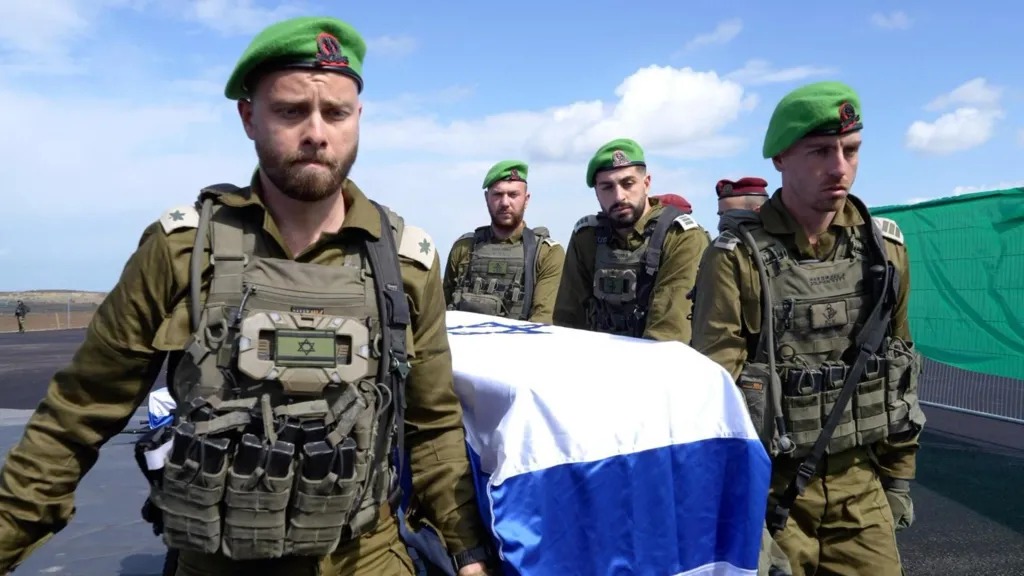
Hamas Dead Hostages Returned to Israel
Hamas has handed over the first Hamas dead hostages since the Gaza ceasefire began on January 19, delivering four bodies to Israel. The coffins, transferred via Red Cross vehicles from Khan Younis, are believed to hold Shiri Bibas, 33, her sons Ariel, 5, and Kfir, 2, and Oded Lifschitz, 84. Taken alive during Hamas’s October 7, 2023, attack, their deaths—unconfirmed until forensic tests—have shaken Israel. Prime Minister Benjamin Netanyahu called it a “torn heart” moment, blaming “monsters.” Crowds lined streets with Israeli and yellow hostage flags as the police convoy reached Jaffa’s Abu Kabir forensic institute for autopsies.
The Bibas family’s fate has gripped Israel since their abduction from Kibbutz Nir Oz. Hamas claimed in November 2023 that an Israeli airstrike killed them, though no proof surfaced. Yarden Bibas, the father, was freed February 1 in a swap for 183 Palestinian prisoners. The family’s statement reflects “turmoil” pending confirmation. Oded Lifschitz, a peace activist taken with his wife Yocheved (freed weeks later), was held by Islamic Jihad until his death.
Ceasefire Deal and Hamas Dead Hostages Exchange
The Hamas dead hostages handover follows a ceasefire deal exchanging 33 hostages for 1,900 Palestinian prisoners over six weeks. In Khan Younis, four coffins sat on a propaganda-laden stage before Red Cross oversight, echoing prior live releases. Six living hostages are set for Saturday. So far, 28 hostages and over 1,000 prisoners have been swapped, leaving 66 from October 7—half likely alive—plus three others held for over a decade. Talks for a permanent end to the war, part of the deal’s next phase, are stalled.
That October 7 attack killed 1,200, mostly civilians, and saw 251 abducted. Israel’s response has claimed 48,297 Palestinian lives, per Gaza’s health ministry. The Red Cross urged dignity in handovers after criticism of Hamas’s theatrical releases. For deeper context, see BBC or explore Kenkou Land.
Main Body: Grief and Questions Linger
Returning Hamas dead hostages marks a grim milestone. Shiri and her boys, the youngest captives, symbolized Israel’s trauma—Kfir was just 9 months old when taken. Their unverified deaths spark anguish and debate. Did Israeli strikes kill them, as Hamas alleges, or did captivity end them? Forensic results will clarify, but the Bibas family clings to hope until then. Oded’s death, at 84, underscores the toll on the elderly. His journalism and peace work contrast starkly with his fate under Islamic Jihad.
The ceasefire, fragile since January, aims to halt 15 months of war. Israel seeks Hamas’s destruction; Hamas demands a full withdrawal. With 28 exchanges done, 66 hostages remain—time ticks for the living. Netanyahu vows justice, but stalled talks threaten progress. The convoy’s journey past flag-waving crowds shows a nation united in grief, yet divided on the war’s endgame. Safety systems—diplomacy, not engineering—saved no one here, unlike plane crashes. This is raw, human loss, with answers still buried in Gaza’s rubble.





